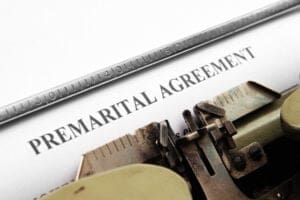Landlord Responsibilities Tenant Rights: A Comprehensive Guide to Constitutional Protections and Legal Frameworks
Tenants and property owners navigating rental relationships frequently ask, “What are the fundamental legal responsibilities of landlords and the essential rights of tenants under current law?” Landlord responsibilities tenant rights represent a complex framework of federal, state, and local legal requirements that balance property owners’ constitutional rights with tenants’ need for safe, habitable housing. Unlike simple contractual arrangements, modern landlord-tenant relationships operate within comprehensive regulatory structures that establish minimum standards while preserving individual liberty and property rights principles fundamental to American law.
Tenant rights have evolved significantly through federal civil rights legislation, state consumer protection laws, and local housing ordinances that create layered protections while maintaining respect for property ownership rights. The legal framework emphasizes that while property owners possess fundamental constitutional rights to manage their investments, these rights must be exercised within established legal boundaries that protect tenants from discrimination, unsafe conditions, and unfair practices.
What Constitutional Protections Apply to Landlord-Tenant Relationships?
Constitutional protections under the Fourth and Fourteenth Amendments establish fundamental limitations on government interference with both property rights and privacy expectations in rental housing. The Fourth Amendment’s protection against unreasonable searches applies to both landlords and tenants, requiring proper notice and legitimate reasons for entry while protecting tenants’ reasonable expectations of privacy in their homes.
Property owners’ constitutional rights include Fifth Amendment protections against government taking of private property without just compensation and due process protections against arbitrary regulatory interference. These constitutional safeguards ensure that housing regulations serve legitimate public interests while respecting property owners’ fundamental rights to use and manage their investments.
Due process rights protect both landlords and tenants during eviction proceedings, requiring adequate notice, proper legal procedures, and meaningful opportunities to present evidence and arguments. Courts must follow established legal standards when evaluating landlord-tenant disputes, ensuring that neither party faces arbitrary deprivation of their legal rights.
The Equal Protection Clause prevents discriminatory treatment in housing based on protected characteristics while allowing reasonable business distinctions based on legitimate factors such as creditworthiness, rental history, and ability to pay. This constitutional framework creates stable legal environments that encourage both housing investment and tenant security.
How Do Federal Laws Establish Baseline Tenant Protections?
Federal housing laws create nationwide minimum standards that all landlord-tenant relationships must meet, regardless of state or local variations. The Fair Housing Act prohibits discrimination based on race, color, religion, sex, national origin, familial status, and disability, establishing fundamental civil rights protections that apply to virtually all rental housing.
The Americans with Disabilities Act requires reasonable accommodations for tenants with disabilities, including modifications to policies and physical accommodations that enable equal access to housing. These federal protections create affirmative obligations for landlords while establishing clear remedies for tenants who face discrimination or inadequate accommodations.
Section 8 housing assistance programs operate under federal oversight to ensure that participating landlords meet quality standards while providing affordable housing options. These programs demonstrate how federal policy can support both property owners and low-income tenants through structured partnerships that serve broader social objectives.
Federal tax policies including depreciation allowances and rehabilitation credits provide incentives for property owners to maintain and improve rental housing while complying with applicable tenant protection requirements. These economic incentives support quality housing provision while acknowledging the legitimate business interests of property investors.
What Are the Essential Landlord Responsibilities Under Modern Law?
Habitability requirements represent the most fundamental landlord responsibility, mandating that rental properties meet basic safety and health standards throughout the tenancy period. The implied warranty of habitability, recognized in most states, requires landlords to maintain properties in conditions suitable for human habitation regardless of lease provisions attempting to waive these obligations.
Essential habitability standards include adequate heating and cooling systems, functioning plumbing and electrical systems, structural integrity, and freedom from pest infestations. Property maintenance obligations extend beyond initial rental conditions to encompass ongoing repairs and improvements necessary to maintain habitability standards.
Safety compliance requires landlords to ensure that rental properties meet applicable building codes, fire safety requirements, and health department standards. These obligations include providing adequate exits, functioning smoke and carbon monoxide detectors, and compliance with lead paint disclosure requirements for older properties.
Landlords must respond promptly to repair requests that affect habitability, with specific timeframes often established by state law depending on the urgency of needed repairs. Emergency repairs affecting health and safety typically require immediate attention, while non-emergency issues may allow reasonable timeframes for completion.
What Rights Do Tenants Possess During Their Tenancy?
Privacy rights provide tenants with fundamental protections against unreasonable intrusion by landlords, requiring adequate notice before entry except in genuine emergencies. Most states require 24-48 hours advance notice for non-emergency inspections or repairs, with entry permitted only during reasonable hours and for legitimate purposes.
The right to quiet enjoyment protects tenants from harassment, intimidation, or interference with their peaceful use of rental properties. This tenant protection prevents landlords from using self-help measures to force tenants to vacate and establishes legal remedies for tenants who face improper interference with their tenancy rights.
Security deposit rights include protections regarding deposit amounts, holding requirements, and return procedures that prevent landlords from improperly retaining tenant funds. Most states limit security deposits to one or two months’ rent and require itemized accounting of any deductions when deposits are returned.
Tenants possess rights to form tenant associations, communicate with other tenants about housing conditions, and report violations to appropriate authorities without facing retaliation. These organizational rights support collective advocacy while providing protection against landlord intimidation or punishment for exercising legal rights.
How Do State Laws Create Different Landlord-Tenant Frameworks?
State-specific statutes establish varying legal environments for landlord-tenant relationships, with significant differences in notice requirements, eviction procedures, and damage remedies. Some states maintain more tenant-friendly frameworks with enhanced protections, while others emphasize property owner rights and streamlined procedures.
California’s comprehensive tenant protection laws exemplify extensive state-level regulation, including just cause eviction requirements, rent stabilization measures, and enhanced habitability standards. The state’s approach reflects policy priorities that emphasize tenant stability and protection while maintaining market-based housing provision.
Texas landlord-tenant law demonstrates alternative approaches that emphasize property owner rights and efficient dispute resolution while maintaining essential tenant protections. The state’s framework reflects different policy priorities regarding the balance between property rights and tenant protections.
State court systems often develop specialized procedures for landlord-tenant disputes, including housing courts or expedited proceedings designed to resolve conflicts efficiently while maintaining appropriate legal protections. These procedural innovations demonstrate how states can adapt legal frameworks to address local conditions and priorities.
What Legal Remedies Are Available for Landlord-Tenant Disputes?
Legal remedies for tenants facing landlord violations include rent withholding, repair and deduct options, constructive eviction claims, and monetary damages for losses caused by landlord breaches. These remedies provide meaningful enforcement mechanisms while encouraging landlords to fulfill their legal obligations.
Rent withholding allows tenants to stop paying rent when landlords fail to address serious habitability problems, though this remedy typically requires following specific procedural requirements and may involve depositing withheld rent with courts or escrow accounts.
Constructive eviction theories permit tenants to terminate leases and seek damages when landlord conduct makes properties uninhabitable, even without formal eviction proceedings. This remedy recognizes that landlord violations can effectively force tenants to vacate despite the absence of formal termination notices.
Monetary damages may include compensation for alternative housing costs, property damage, moving expenses, and in some cases punitive damages for particularly egregious landlord conduct. Legal remedies for landlords include eviction proceedings, monetary judgments for unpaid rent, and recovery of property damage costs beyond normal wear and tear.
How Do Geographic Variations Affect Landlord-Tenant Rights?
Regional legal cultures significantly influence landlord-tenant law interpretation and enforcement, with urban areas often maintaining more tenant-protective approaches while rural jurisdictions may emphasize property owner rights and traditional contractual principles.
Local housing markets affect the practical balance between landlord and tenant interests, with high-demand markets creating different dynamics than areas with abundant housing supply. These economic factors influence both the development of protective legislation and the practical enforcement of existing legal requirements.
Municipal ordinances often provide additional tenant protections beyond state requirements, including enhanced habitability standards, rental registration requirements, and local enforcement mechanisms. Cities like San Francisco and New York have developed comprehensive local frameworks that significantly expand tenant rights.
Climate and environmental factors create region-specific habitability requirements, with states experiencing extreme weather conditions often having enhanced heating, cooling, and weatherproofing standards. These geographic variations require landlords to understand location-specific compliance requirements.
What Are Current Trends in Landlord-Tenant Law?
Technology integration has transformed landlord-tenant relationships through digital rental applications, electronic payment systems, and smart home technologies that create new categories of both conveniences and potential disputes. These technological advances require updated legal frameworks that address privacy, security, and access issues.
The COVID-19 pandemic accelerated adoption of remote proceedings for landlord-tenant disputes while highlighting the importance of digital access and technological equity in housing relationships. Virtual court proceedings have become more common, improving access while maintaining procedural protections.
Regulatory development continues addressing emerging issues such as short-term rental regulation, environmental health concerns, and climate change adaptation requirements that affect both landlord obligations and tenant rights.
Increased focus on mental health and domestic violence protections has led to enhanced tenant rights including early lease termination options, address confidentiality provisions, and accommodation requirements that recognize housing’s role in personal safety and wellbeing.
How Do Professional Legal Services Support Landlord-Tenant Rights?
Legal representation provides essential expertise for navigating complex landlord-tenant law, procedural requirements, and strategic dispute resolution approaches. Both landlords and tenants benefit from professional guidance that helps them understand their rights and obligations while avoiding costly legal mistakes.
Preventive legal services help property owners develop compliant lease agreements, maintenance procedures, and tenant screening practices that reduce dispute likelihood while ensuring compliance with applicable legal requirements. These proactive approaches typically prove more cost-effective than reactive responses to legal problems.
Tenant advocacy organizations often provide legal assistance, education, and representation for low-income tenants who might otherwise lack access to professional legal services. These organizations play crucial roles in ensuring that tenant rights receive practical enforcement regardless of individual financial circumstances.
Professional mediation services offer alternative dispute resolution options that can resolve landlord-tenant conflicts more efficiently and cost-effectively than formal court proceedings while preserving ongoing rental relationships when appropriate.
What Are Common Landlord-Tenant Dispute Categories?
Security deposit disputes represent one of the most frequent categories of landlord-tenant conflicts, involving disagreements over deposit retention, damage assessments, and return procedures. These disputes often arise from unclear lease provisions or inadequate documentation of property conditions.
Habitability complaints create ongoing conflicts when landlords fail to address maintenance issues or when tenants and landlords disagree about repair responsibilities and standards. Property maintenance disputes require careful analysis of lease terms, local standards, and applicable legal requirements.
Eviction proceedings involve complex legal procedures that must balance landlords’ property rights with tenants’ due process protections and housing stability needs. These proceedings require strict compliance with notice requirements, procedural timelines, and legal standards.
Privacy and access disputes arise when landlords exceed their entry rights or when tenants unreasonably restrict necessary access for repairs and inspections. These conflicts require balancing legitimate business needs with tenants’ reasonable privacy expectations.
How Do Discrimination Protections Impact Landlord-Tenant Rights?
Fair housing laws create comprehensive protections against discrimination while establishing clear guidelines for lawful landlord decision-making processes. These laws apply to advertising, tenant screening, lease terms, and all aspects of the rental relationship from application through tenancy termination.
Reasonable accommodation requirements under disability rights laws require landlords to modify policies and make physical changes that enable equal housing access for tenants with disabilities. These accommodation obligations include allowing service animals, accessible parking, and reasonable physical modifications to rental units.
Familial status protections prevent discrimination against families with children while allowing reasonable restrictions on occupancy based on health, safety, and legitimate business considerations. Understanding these protections helps landlords develop compliant policies while serving their target markets.
Religious and cultural accommodation issues increasingly require landlords to balance tenant religious practices with property management needs and other tenants’ rights. These situations require careful legal analysis to ensure compliance with anti-discrimination requirements while maintaining property management authority.
What Are the Financial Implications of Landlord-Tenant Law?
Compliance costs for landlords include expenses for property improvements, legal consultation, and administrative procedures required to meet habitability standards and procedural requirements. Understanding these costs helps property owners budget appropriately while maintaining profitable rental operations.
Legal fee structures in landlord-tenant cases vary significantly, with some jurisdictions providing fee-shifting provisions that require losing parties to pay winners’ attorney fees. These provisions can significantly affect the economics of pursuing or defending landlord-tenant disputes.
Insurance considerations include liability coverage for habitability failures, discrimination claims, and property damage that may result from landlord-tenant disputes. Professional liability protection becomes particularly important for property managers and landlords who manage multiple properties.
Tax implications of landlord-tenant law compliance include deductibility of improvement costs, legal expenses, and the treatment of security deposits and damage payments. Understanding these tax considerations helps landlords manage their financial obligations while maintaining legal compliance.
How Do Emerging Legal Doctrines Affect Landlord-Tenant Rights?
Warranty of habitability expansion continues through court decisions that broaden landlord obligations and tenant remedies for substandard housing conditions. These developments reflect evolving understanding of housing quality standards and tenant protection needs.
Environmental justice considerations increasingly influence landlord obligations regarding lead paint, mold, air quality, and other environmental health factors that disproportionately affect low-income communities. These developments create enhanced responsibilities for property owners while strengthening tenant rights.
Technology privacy issues create new categories of landlord-tenant disputes involving smart home devices, security systems, and data collection practices that require updated legal frameworks addressing digital privacy and consent issues.
Climate change adaptation requirements may create new categories of landlord obligations regarding energy efficiency, extreme weather preparation, and environmental resilience that affect both property improvement requirements and tenant rights to adequate housing.
What Are the Long-term Implications of Landlord-Tenant Law Evolution?
Property investment decisions increasingly must consider evolving tenant protection requirements, compliance costs, and legal risks that affect the profitability and desirability of rental property ownership. These considerations influence housing supply and market dynamics.
Housing market effects of enhanced tenant protections include potential impacts on rental availability, pricing, and the balance between rental and ownership housing options. Understanding these broader economic implications helps inform policy decisions about landlord-tenant law development.
Community development outcomes from landlord-tenant law include effects on neighborhood stability, housing quality, and the availability of affordable rental housing that serves diverse economic populations. These outcomes demonstrate the broader social implications of landlord-tenant legal frameworks.
Legal precedent development through landlord-tenant litigation continues shaping property rights, tenant protections, and the balance between individual liberty and consumer protection that characterizes American housing law.
How Do Professional Standards Govern Landlord-Tenant Practice?
Attorney competence requirements in landlord-tenant law include understanding of federal civil rights law, state landlord-tenant statutes, local housing ordinances, and court procedures that govern these specialized legal relationships.
Professional responsibility obligations include providing competent representation while maintaining appropriate boundaries between legal advocacy and property management advice. These ethical requirements ensure that legal professionals provide effective assistance while maintaining professional integrity.
Continuing education requirements help attorneys stay current with evolving landlord-tenant law, including new legislation, court decisions, and regulatory developments that affect practice requirements and client counseling obligations.
Professional liability considerations include malpractice exposure for inadequate legal advice, missed deadlines, and improper handling of security deposits or other client funds. Risk management practices help protect both attorneys and their clients while maintaining high professional standards.
What Are the International Perspectives on Landlord-Tenant Rights?
Comparative legal systems provide insights into different approaches to balancing property rights with tenant protections, including European models that emphasize long-term tenancy security and social housing provision.
International human rights principles increasingly recognize adequate housing as a fundamental right, potentially influencing domestic landlord-tenant law development through enhanced tenant protections and landlord obligations.
Global urbanization trends create similar challenges across different legal systems regarding affordable housing provision, tenant protection, and property investment incentives that inform American policy discussions about landlord-tenant law reform.
Cultural considerations in diverse communities require understanding of different expectations regarding housing relationships, family structures, and community responsibilities that may affect landlord-tenant law application and dispute resolution approaches.
How Do Prevention Strategies Minimize Landlord-Tenant Disputes?
Comprehensive lease agreements that clearly define parties’ rights and responsibilities help prevent disputes while ensuring compliance with applicable legal requirements. These agreements should address maintenance responsibilities, entry procedures, and dispute resolution mechanisms.
Property documentation including move-in inspections, photographic records, and maintenance logs provides objective evidence that can prevent disputes while supporting either party’s position when conflicts arise. These records become particularly important for security deposit and damage claim disputes.
Communication protocols that establish clear procedures for repair requests, emergency contact, and dispute resolution help maintain positive landlord-tenant relationships while ensuring that legal obligations are met promptly and appropriately.
Regular legal compliance reviews help landlords stay current with changing legal requirements while identifying potential issues before they escalate to formal disputes. These preventive approaches typically prove more cost-effective than reactive responses to legal problems.
Conclusion: Principled Approaches to Landlord-Tenant Rights and Responsibilities
Landlord responsibilities tenant rights represent a fundamental framework that balances constitutional property rights with essential consumer protections in American housing law. This balance reflects core conservative principles of individual liberty, property rights, and limited government intervention while recognizing legitimate public interests in safe, fair housing provision.
Constitutional protections ensure that landlord-tenant law operates within established legal boundaries that respect both property owners’ investment rights and tenants’ reasonable expectations of safe, habitable housing. The Fourth and Fifth Amendments provide essential frameworks that prevent arbitrary government interference while maintaining necessary protections for vulnerable parties.
Due process rights in landlord-tenant proceedings serve crucial functions in maintaining confidence in legal institutions while protecting individual rights and property interests. These procedural safeguards ensure that disputes are resolved fairly while preserving the rule of law that encourages both housing investment and tenant security.
The evolution of landlord-tenant law demonstrates how American legal institutions can adapt to changing social conditions while maintaining respect for fundamental principles of property rights and individual liberty. This evolution reflects the dynamic nature of legal frameworks that must serve contemporary needs while preserving constitutional foundations.
Federal civil rights laws provide essential baseline protections that ensure equal access to housing while allowing market-based allocation of housing resources. These protections serve both moral imperatives and economic efficiency by preventing discrimination while maintaining competitive housing markets.
State and local variations in landlord-tenant law reflect federalism principles that allow communities to develop housing policies suited to their particular circumstances while maintaining compliance with constitutional requirements. This diversity enables policy experimentation while preserving essential rights.
The complexity of modern landlord-tenant law makes professional legal assistance valuable for both property owners and tenants navigating their rights and obligations. Skilled legal representation helps ensure compliance with applicable requirements while protecting legitimate interests within established legal frameworks.
Property rights and tenant protections need not be viewed as conflicting interests but rather as complementary aspects of legal frameworks that support both housing investment and consumer protection. Effective landlord-tenant law serves both property owners and tenants by providing clear expectations and reliable enforcement mechanisms.
The future development of landlord-tenant law will likely continue balancing these competing interests through careful attention to constitutional principles, economic realities, and evolving social needs. This balance requires ongoing dialogue between property owners, tenant advocates, legal professionals, and policymakers who share common interests in stable, fair housing relationships.
Investment in understanding landlord-tenant rights and responsibilities serves both individual interests and broader community welfare by promoting compliance with legal requirements, preventing costly disputes, and supporting the development of quality rental housing that meets diverse community needs. Professional legal guidance helps ensure that these important relationships operate within appropriate legal frameworks while serving legitimate interests of all parties involved.
- Hawaii Consumer Protection Office 2024 Landlord Tenant Handbook
- Hawaii Government Residential Landlord Tenant Code
- Hawaii Revised Statutes Chapter 521 Landlord Tenant Law
- Legal Aid Society Hawaii Landlord Tenant Rights Brochure
- Nolo Legal Encyclopedia Hawaii Landlord Tenant Laws
- Super Lawyers Guide to Landlord Rights and Responsibilities
- Taylor Francis Academic Journal Housing Policy Research
- University of Michigan Law Review Landlord Tenant Analysis
- SSRN Academic Paper on Rental Housing Law
- PMC Research Article on Housing Rights


















